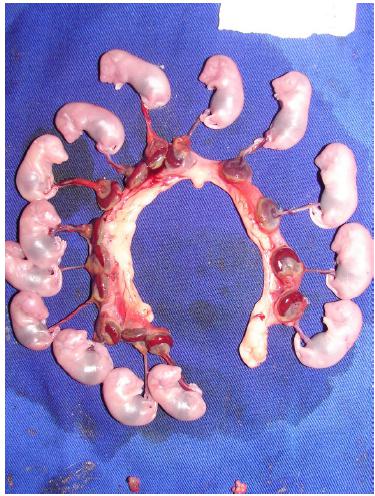Abstract
Purpose:
To evaluate the effects of enoxaparin and unfractionated heparin (UFH) administered in prophylactic and therapeutic doses on fetal vessels in healthy pregnant Wistar rats, according to Doppler velocimetry measurements.
Methods:
Fifty animals were assigned to one of five groups: controls (saline), prophylactic and therapeutic enoxaparin (1 and 2 mg/kg/day, respectively), and prophylactic and therapeutic UFH (72 and 400 UI/kg/day, respectively). Uterine horns were examined by ultrasound for identification of live fetuses. A sample of these fetuses underwent Doppler velocimetry. Spectral curves, peak systolic velocity (PSV), pulsatility index (PI), and resistance index (RI) of the middle cerebral artery, ductus venosus, and umbilical artery were investigated. Differences were considered statistically significant when p<0.05.
Results:
No significant differences in PSV, PI, or RI values were observed among the groups.
Conclusion:
Doppler velocimetry measurements revealed no significant effects of enoxaparin or unfractionated heparin on fetal vessels in pregnant Wistar rats.
Key words:
Ultrasonography; Doppler; Middle Cerebral Artery; Uterine Artery; Heparin; Anticoagulants; Rats



